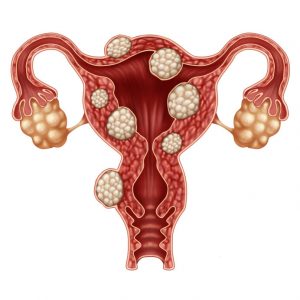
Uterine artery embolization is a minimally invasive, modern treatment option for uterine fibroids, the most common type of benign uterine growths, a condition that affects over one third of women in childbearing age. Here are some things that you should know about the affection and the intervention that is becoming increasingly popular and widely available in our days.
What Are Uterine Fibroids
Uterine fibroids are solid, benign growths that appear in the womb. The exact causes of the affection are not fully understood, but it is believed that their appearance is triggered by hormonal changes and fluctuations, especially the modifications that have an impact on the estrogen-progesterone balance. They can range in size from very small and undetectable to the naked eye to so bulky that they distort the uterus, they can appear as a single growth or there can be several of them. Uterine fibroids often do not cause any symptoms and are accidentally discovered during routine pelvic exams performed by gynecologists, but some women get mild to moderate symptoms that include the following:
- Irregular menstrual periods, coming at intervals that are either shorter or longer than normal (21-35 days);
- Menstrual periods that very light or very heavy;
- Mood changes that are incontrollable;
- Diarrhea or constipation;
- Pelvic pressure, pain and cramping;
- Pain during sexual intercourse;
- Bleeding after sexual intercourse;
- Depression and anxiety.
How Uterine Fibroids Are Treated
While uterine artery embolization is the most modern treatment option for fibroids, it is not the only one. Other methods include the administration of drugs to stop the hormonal supply to the fibroids, inducing a menopause-like state for a couple of months, time during which the fibroids might shrink or even completely disappear; the installation of intrauterine devices that also stop the production of certain hormones and surgical methods used either to remove the fibroids or the complete womb.
What Is Uterine Artery Embolization
The treatment for uterine fibroids Fort Collins area is performed in the radiology suite of hospitals, usually in the form of a day care intervention. The process consist of the installation of a catheter through which tiny beads are injected into the arteries that supply the uterus with blood with the goal of blocking the blood supply to the fibroids, causing them to start shrinking and to die eventually.
The procedure usually does not require general anesthesia, mild to moderate being sufficient in most cases. The process lasts for about an hour, after which the patient is monitored until she becomes completely alert and the doctor can be sure that she does not have any adverse reactions. The wound that remains after the catheter is removed is very small, therefore the healing is very fast, but for a while, the patient might experience some symptoms, such vaginal bleeding or some abdominal pain.
The women who undergo uterine artery embolization must be aware that the treatment might provide a permanent solution – on some cases, the fibroids grow back over time and they might start causing symptoms again, usually a couple of years after the embolization.
